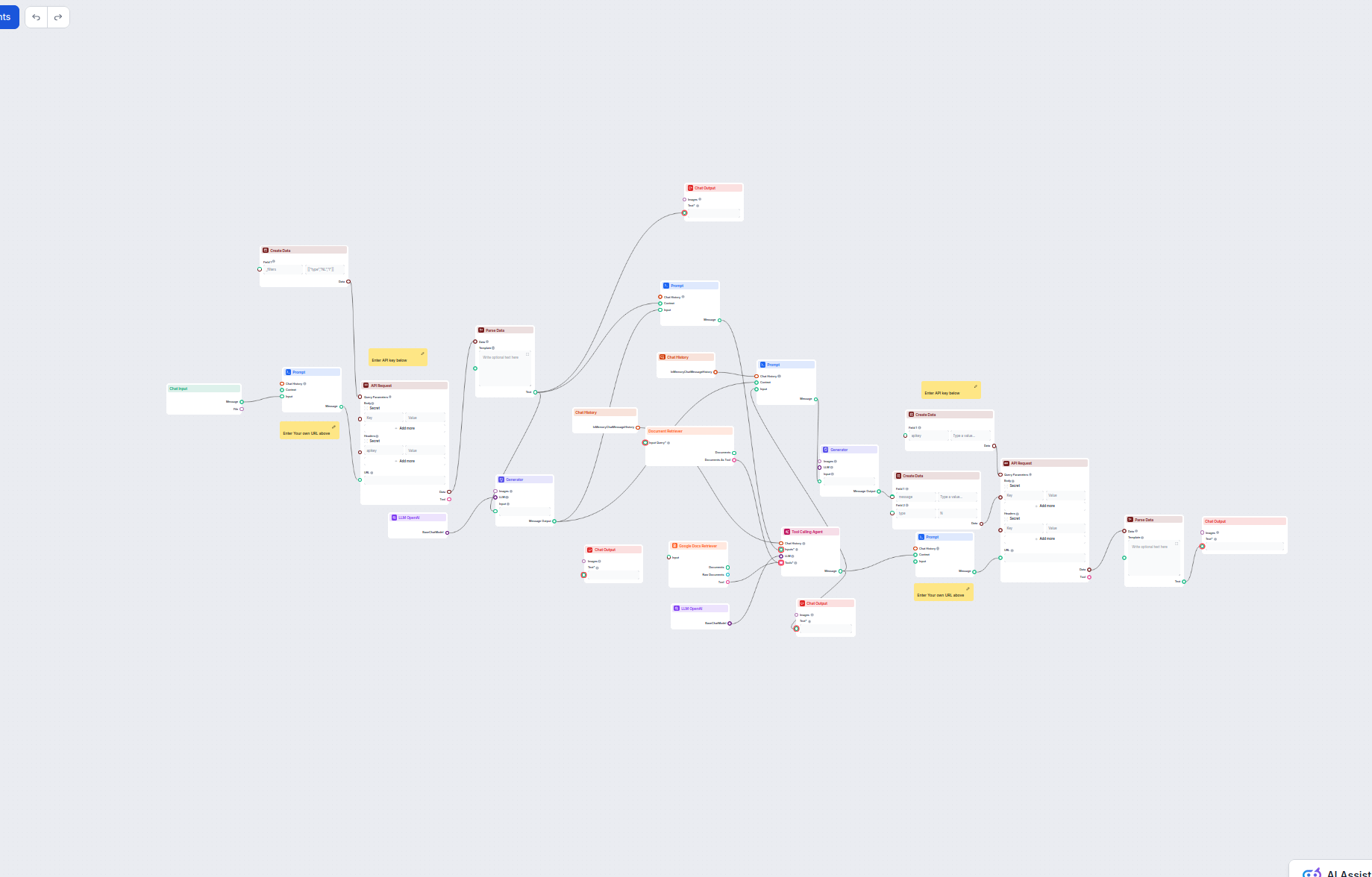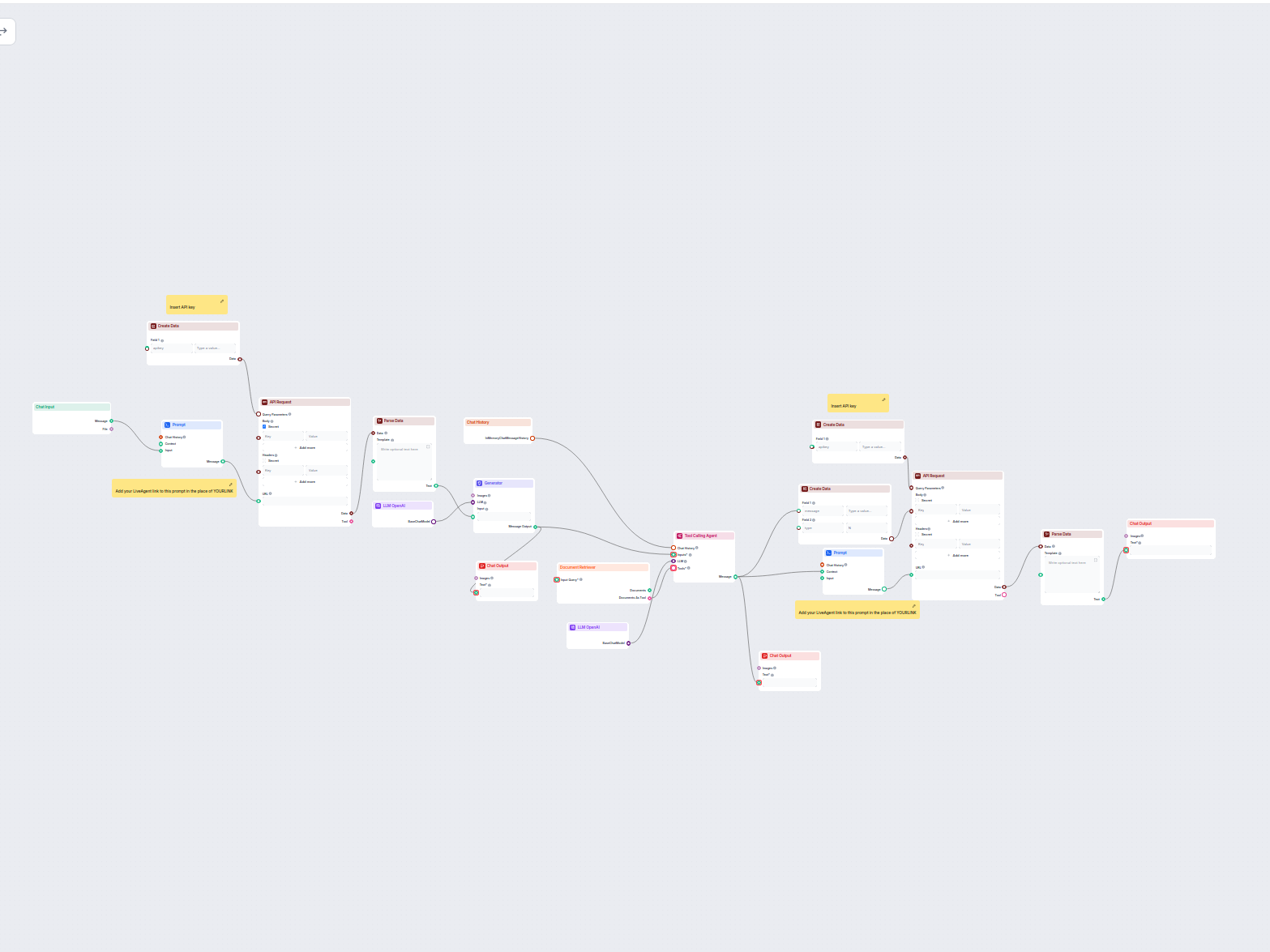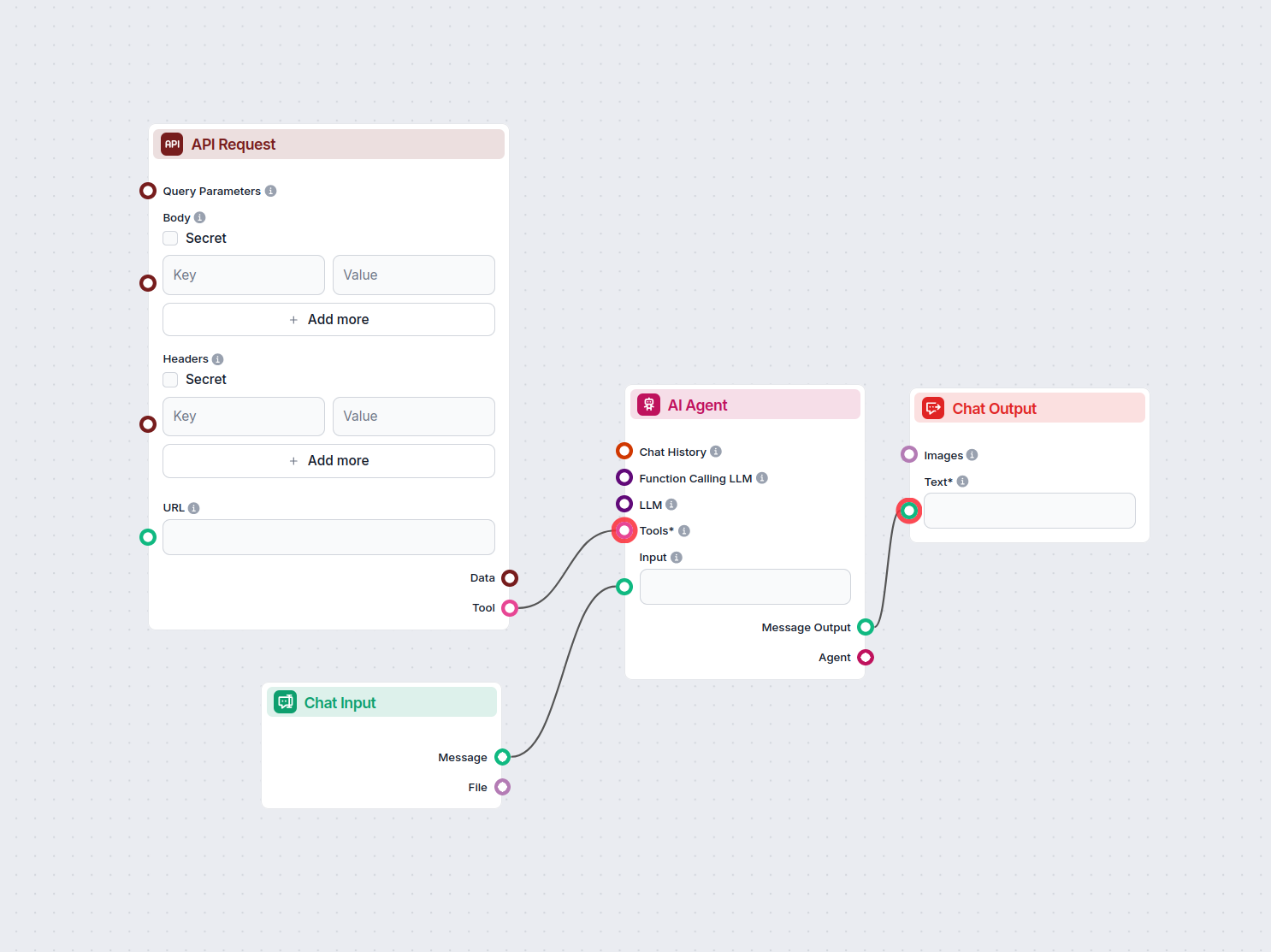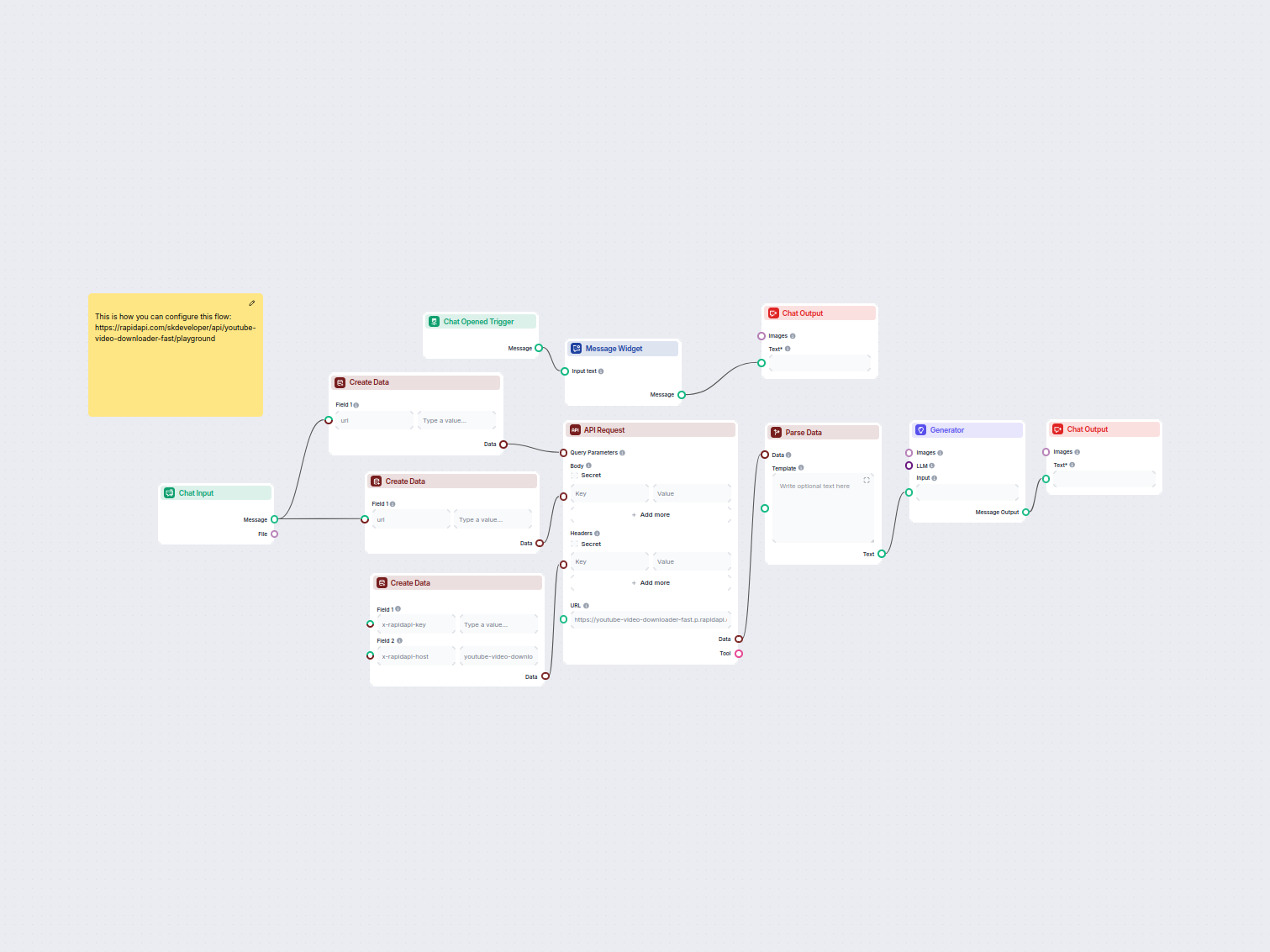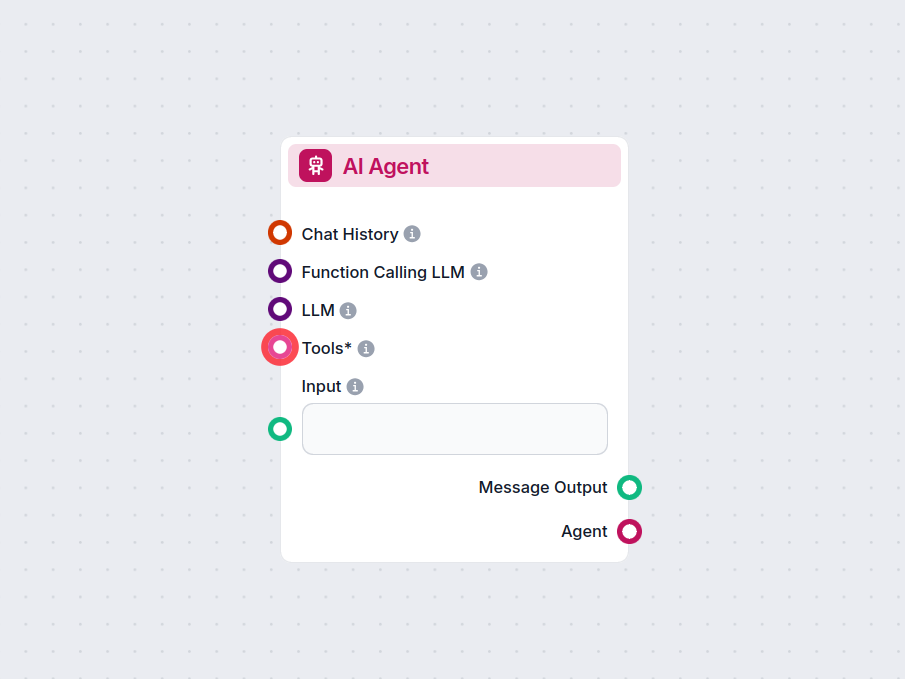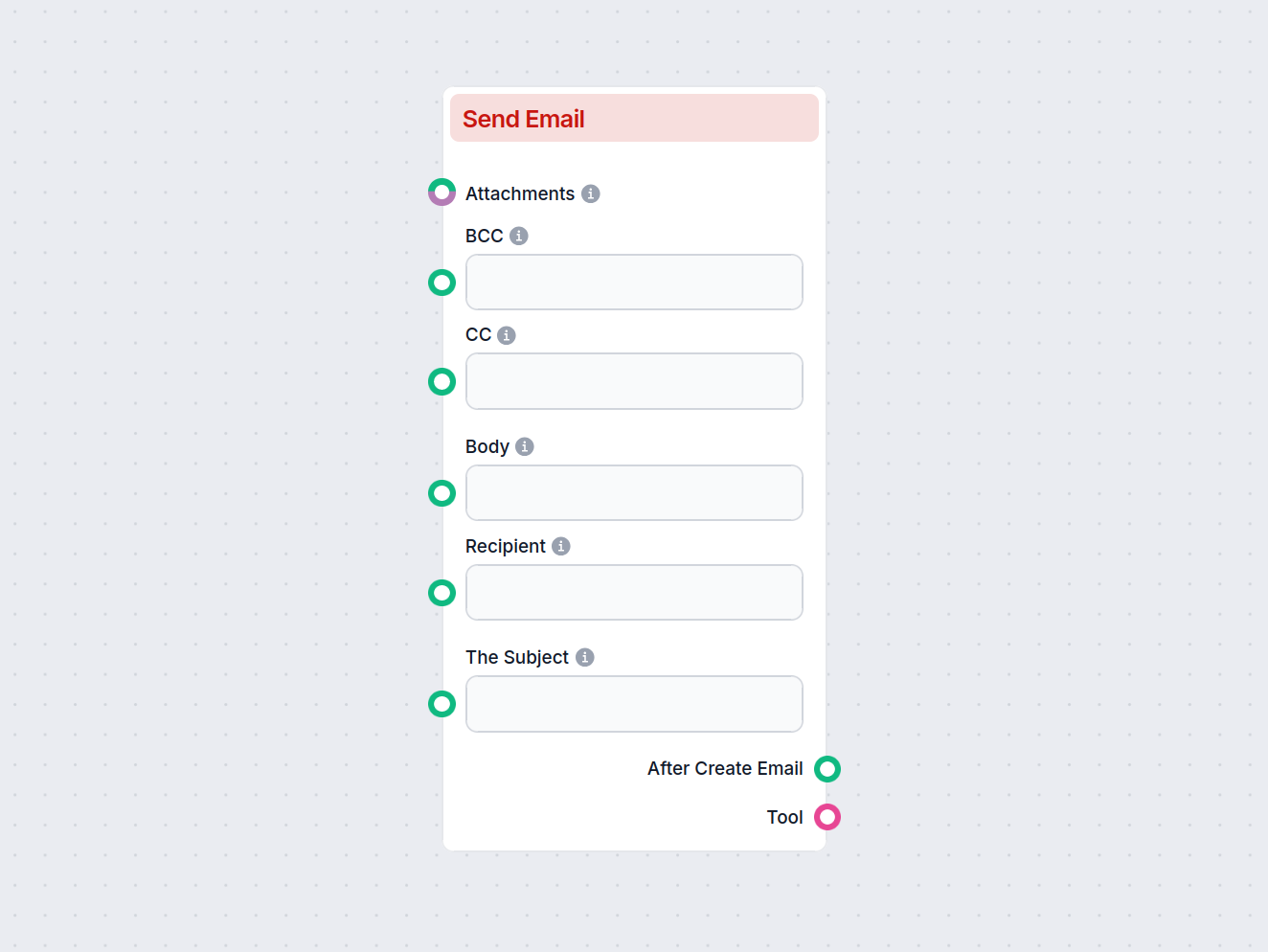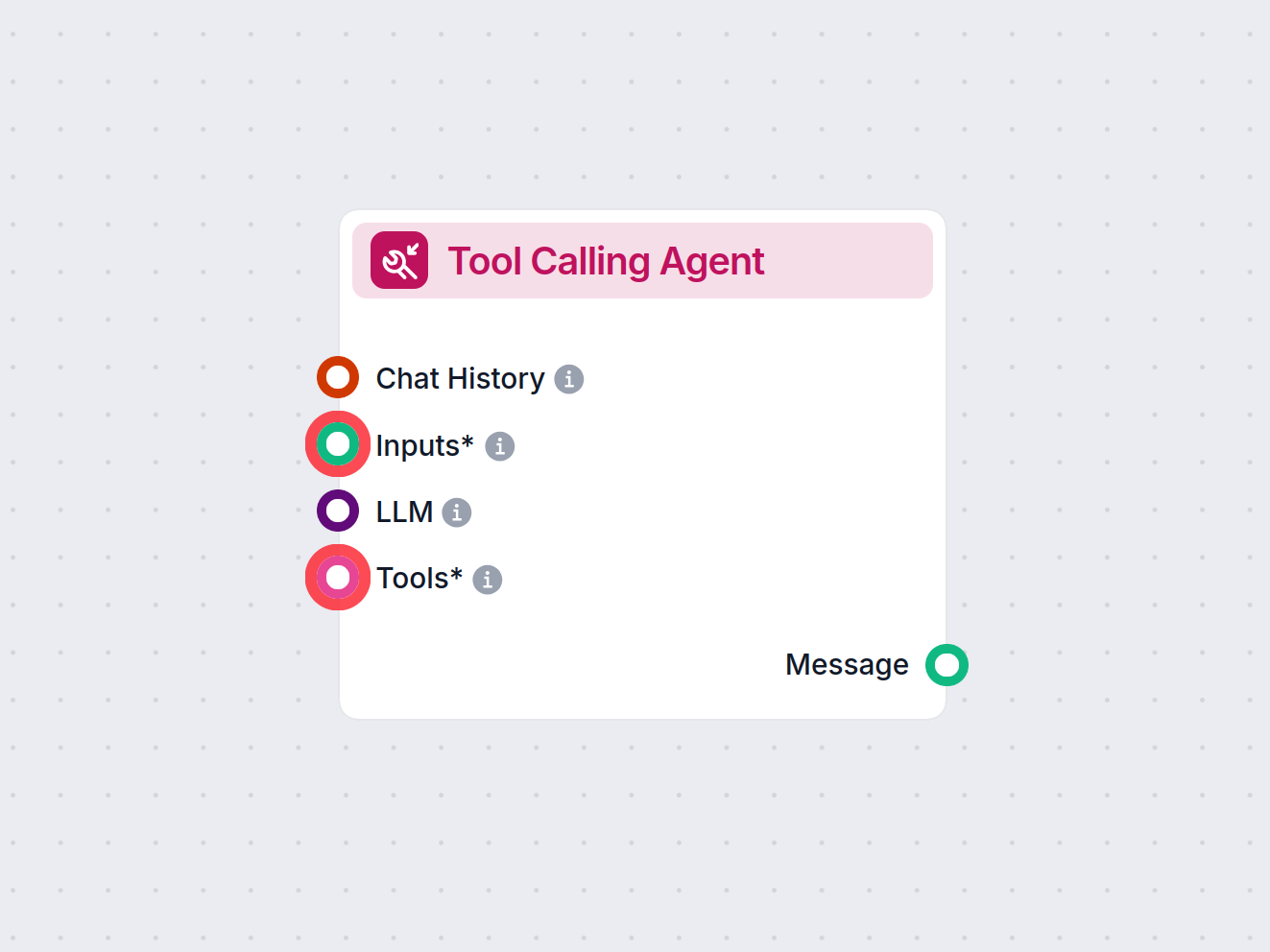
AI Customer Support Agent for LiveAgent
This workflow automates customer support for your company by integrating LiveAgent conversations, extracting relevant conversation data, generating responses us...

The API Request component lets you connect your flows to external APIs by sending customizable HTTP requests and handling responses.
Component description
The API Request component is a versatile tool designed to facilitate HTTP requests within your AI workflows. It enables your workflow to interact with external APIs or web services by sending requests to one or more URLs and processing the responses. This capability is essential for tasks such as data retrieval, integration with third-party services, or invoking custom endpoints as part of automated or intelligent processes.
This component allows you to configure and send HTTP requests (GET, POST, PATCH, PUT) to specified URLs. You can customize the request by adding headers, query parameters, and a request body. It also supports handling form data and setting custom timeouts, making it suitable for a wide range of API interactions.
The API Request component supports the following configurable inputs:
| Field | Description | Type | Default/Options |
|---|---|---|---|
| URL | Enter one or more target URLs, separated by commas. | String | |
| Method | HTTP method to use for the request. | Dropdown | GET, POST, PATCH, PUT |
| Headers | Custom headers to include in the request (as a dictionary). | Dictionary/Data | |
| Body | Data payload for POST, PATCH, or PUT requests (as a dictionary). | Dictionary/Data | |
| Query Parameters | Key-value pairs to append as URL query parameters. | Dictionary/Data | |
| Use Form Data | Toggle to send data as application/x-www-form-urlencoded. | Boolean | false |
| Timeout | Time (in seconds) before the request times out. | Integer | 5 |
| Cache TTL | How long to cache the API response. Set to ‘No cache’ to disable. | Dropdown | No cache, 5 min, … etc. |
| Verbose | If enabled, prints verbose output for debugging. | Boolean | false |
| Tool Name | Name for this API request tool (for use by agents). | String | |
| Tool Description | Description to help agents understand how to use this tool. | String (multiline) |
The component produces two main outputs:
| Output Name | Type | Description |
|---|---|---|
| Data | Data | The response data from the API request. |
| Tool | Tool | Makes this API request available as a “tool” for agent-based workflows. |
The API Request component is an essential building block for any AI process that needs to interact with web services or external data sources. It offers a comprehensive set of configuration options to handle a wide variety of HTTP request scenarios, and its outputs can be used directly or made available as a tool for agent-based AI workflows.
To help you get started quickly, we have prepared several example flow templates that demonstrate how to use the API Request component effectively. These templates showcase different use cases and best practices, making it easier for you to understand and implement the component in your own projects.
This workflow automates customer support for your company by integrating LiveAgent conversations, extracting relevant conversation data, generating responses us...
This AI-powered workflow automates customer support by combining internal knowledge base search, Google Docs knowledge retrieval, API integration, and advanced ...
This AI-powered workflow automates customer support by connecting user queries to company knowledge sources, external APIs (such as LiveAgent), and a language m...
An automated AI-powered workflow to fetch, summarize, and present the top Hacker News stories, including story details, URLs, and top comments. Users can intera...
This AI-powered chatbot instantly provides detailed information about any IP address, including city, country, timezone, and ISP, by leveraging live data from a...
Easily generate multiple format download links (MP4, audio, HD, etc.) for any YouTube video using a simple chat interface. The workflow collects a YouTube link,...
The API Request component enables your flow to send HTTP requests (GET, POST, PATCH, PUT) to one or more URLs, letting you connect with any external API or web service.
Yes, you can add custom headers and body content to suit your target API. Both can be set using data inputs or dictionaries.
Absolutely. You can append query parameters to your URL and choose from various HTTP methods, including GET, POST, PATCH, and PUT.
Yes, you can configure how long API responses should be cached, or disable caching entirely, offering control over data freshness and performance.
Yes, it's designed for seamless integration with virtually any third-party service that exposes an API, making it a core component for automation and advanced workflows.
Start adding real-time data, third-party services, or custom integrations to your flows using API Request.
The AI Agent component in FlowHunt empowers your workflows with autonomous decision-making and tool-using capabilities. It leverages large language models and c...
Automate email creation with the Send Email component—compose and send emails via Gmail directly within your workflows. Easily set recipients, subject, body, CC...
Explore the Tool Calling Agent in FlowHunt—an advanced workflow component that enables AI agents to intelligently select and use external tools to answer comple...
